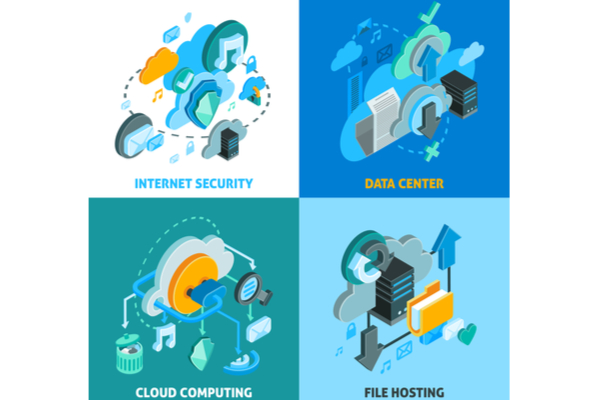Contact centers are the heart of a business’ customer service. Regardless of the size, they are the driving force of customer interactions. Over the years, the term ‘going cloud’ has become a significant buzzword in the market. Thus, many legacy and nascent contact centers have opened the doors to cloud contact center.
But, to maintain a consistently performing contact center is imperative for the enterprise. And as the critical middleman between the brand and the customer, it is essential they do not encounter downtimes. This could slow-down business and affect customer loyalty in the long run. Therefore, the need to modernize it and deliver state-of-the-art experiences to customers.
So, what is a cloud contact center?
It is a comprehensive suite of tools and applications hosted on cloud servers, making interactions accessible from anywhere. They have become very common because of their immediate availability as a service. It can also adapt to business needs, be scaled up or down and easily switch between messaging strategies at any moment.
Cloud vs. On-premise contact centers
While both contact centers ensure the job gets done, enterprises need to keep up with trends in the market and optimize their infrastructure and IT ecosystems. They also need to track the customers’ growing demands and provide seamless customer experience. But then again, most enterprises don’t know what is different between cloud and on-premise contact centers.
Here are a few areas where on-premise contact centers are lagging:
- Installation/Set-up/Faster GTM
- Operational and ownership costs
- Flexibility
- Scalability
- Easy management
- Security
- Reliability
- Agent Efficiency

Reasons to migrate to the cloud
There may be several reasons why a traditional contact center might be slowing down your service. But, before you take the leap, ask yourself – why it is necessary that you move operations to the cloud? What problems can you solve if you adopt the solution?
Here are a few reasons to help you decide whether you need a cloud-based contact center:
- To revamp IT and operational strategies and focus on growth strategies
- To have access to continuous innovation and updates
- To efficiently manage costs and reallocate them wherever required
- To find newer and future-proof service ecosystems
Ways to improve contact center performance on the cloud
The task of making a contact center successful doesn’t happen overnight. It takes a considerable amount of effort to align people, processes, and system to organizational goals. But with cloud solutions, the path to success is smoother.

Here are five ways you can maintain a consistently performing cloud contact center:
Manage multiple contact centers
Collaboration, now, has become quick and easy, and cloud contact centers are not far behind. Eliminate the need for infrastructure at several locations. Instead, overlay existing on-premise systems and drive behavior from the cloud. With a simple-to-manage system, it can improve business performance in an effective manner.
Cloud-based contact centers solutions work on omni-channel technology to create centralized control and management across locations and channels. This allows rules and scripts to be modified whenever necessary.
Holistic system integration
Contact centers depend on many software solutions to provide the right experience for agents and customers. But if any one of those tools encounters problems, they are likely to cause a delay in service.
With cloud contact centers, all business tools are customizable according to the convenience of the end-user. They are available at the click of a button and can enrich agent experience and reduce data redundancy. By accessing multiple systems from a single location, it increases the need for data-driven decisions.

User-interactive systems
Easy-to-use and interactive cloud solutions have numerous benefits for users. It eradicates the need for agent coaching or other training programs, allowing them to spend more time on customer resolution.
Cloud contact centers work differently from traditional ones. And the way they receive updates on cloud applications also vary. These cloud platforms are available for immediate usage and subsequently each time users log into the software they receive up-to-date versions.
Analytics mixed routing strategies
A cloud-based routing system doesn’t just collect data from one source. It gathers data from CRM, IVR, ACD, customer databases and public demographic sources. It then analyzes data to dynamically route customer interaction on the basis of a set of rules.
- Performance routing – Matches customers with agents who have the best business outcomes
- Demographic and personality routing – Connects customers based on the familiarity or like-mindedness
- Customer status routing – Chooses agents who are best at retention and sales
- Value-based routing – Routes prioritized customers to higher-skilled agents
- Media-prioritization – Matches interactions based on the channel used
Track agent performances
Contact center supervisors can breathe a sigh of relief because of cloud contact centers. They can spend less time worrying about back end operations. Instead, they can focus on efficient agent performance by improving the quality of service. Using real-time dashboards, reports, and powerful data insights, managers/supervisors can monitor call analytics and analyze key performance metrics to optimize services.
How a better performing cloud contact center boots customer experience?
With cloud-based contact centers, agents have better access to customer information. They have an overall view of the customer. By understanding their behavioral patterns, historical and transactional data, agents can serve customers better.
As agents work on multiple platforms on a single workstation, they can interact on any communication channel that is convenient for the customer. This allows them to multitask and offer 360-degree customer support anywhere and anytime.
This efficient and seamless experience to resolve customer queries will only enable superior customer experiences.
How does it boost revenue?
Most cloud-based contact centers work on a subscription-based model. This helps cut down maintenance or licensing costs, allowing users to pay only for the features and storage necessary. As a far more cost-effective method than on-premise contact centers, they can rapidly be scaled up or down when required, without the need for additional hardware expenses, especially during seasonal peaks.
Does it boost agent productivity?
Cloud contact centers allow agents to log in from any convenient place. They can schedule their work according to their flexibility. With easy access to information on servers and an integrated and intuitive dashboard, it empowers them to spend lesser time looking up customer information. This permits them to spend more time handling multiple customer interactions across diverse channels, reducing the time spent per customer, and in turn reaching precision-level resolutions. The power of the cloud results in happier, more productive and efficient workforce.
Features such as Visual IVR, ChatBot, Customer Journey Analytics (CJA), Prioritized Callbacks can also help save agent time, along with efficient routing technology that matches the right agent with the right customer.

Here’s how you can choose the right cloud contact center partner
While the decision to move contact center operations to the cloud is the first step, it is critical to choose the right vendor, who will help you through the journey. Even though infrastructure like data, servers, and licenses are key, they are the easiest to tick off on the checklist. You must look for a partner with diverse applications and integration capabilities, who are platform agnostic and able to handle multiple technologies. They should understand your KPI needs and how your enterprise works before implementing solutions or making recommendations.
Businesses will always continue to value cloud-based contact center solutions as they offer updates and features. This definite path will not just improve customer interaction but also keep steadily increasing customer satisfaction.
Thereby contact centers are bound to use cloud solutions to achieve superior customer experience.
- Categories
- Tags
- Archives
Subscribe For Updates
Get the Servion Blog updates in your inbox.
Recommended For You
- C-Zentrix Partners with Servion to offer cloud-based omnichannel and AI-powered contact center solutions in India
- Average Handling Time (AHT): still the lynchpin of contact centers management?
- The Road to Adoption: ChatGPT is the EV of customer experience
- Why is customer service still a challenge in today's business landscape?
- The Evolution of Remote Call Centers: Enhancing Customer Experience in a Virtual World











